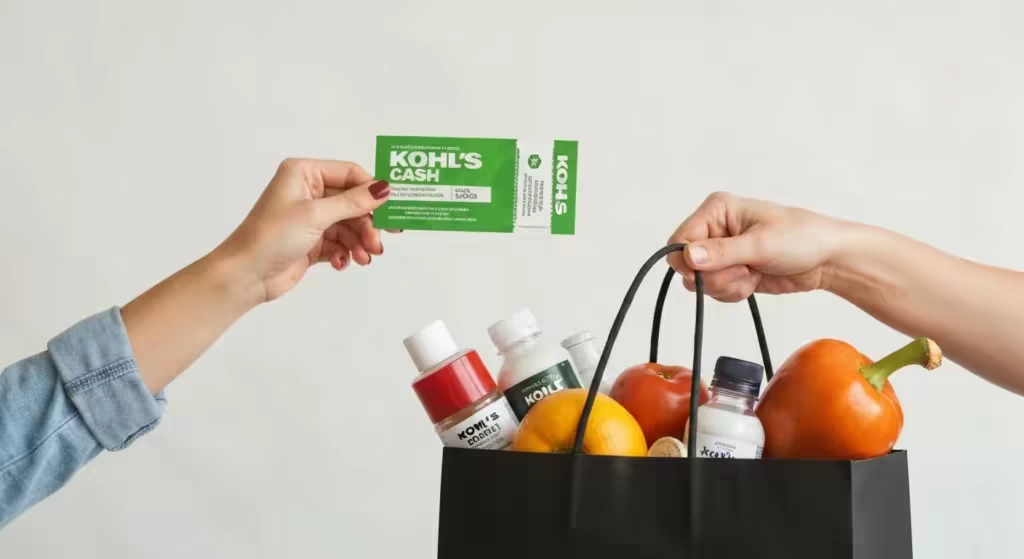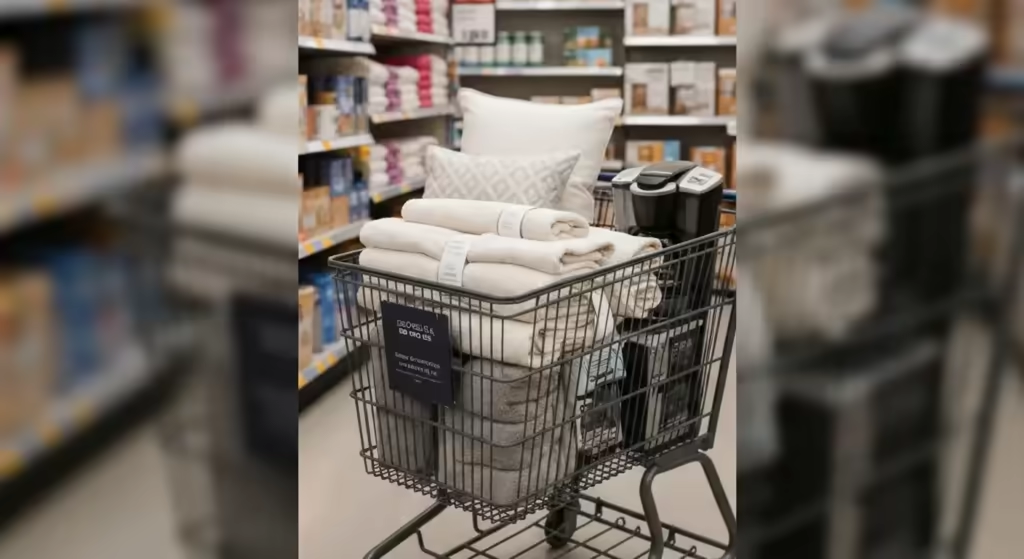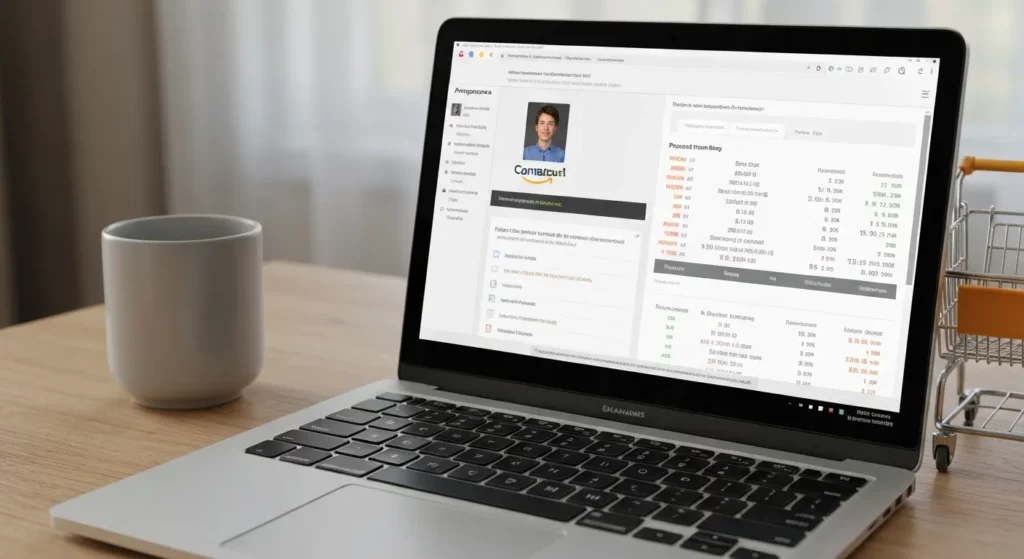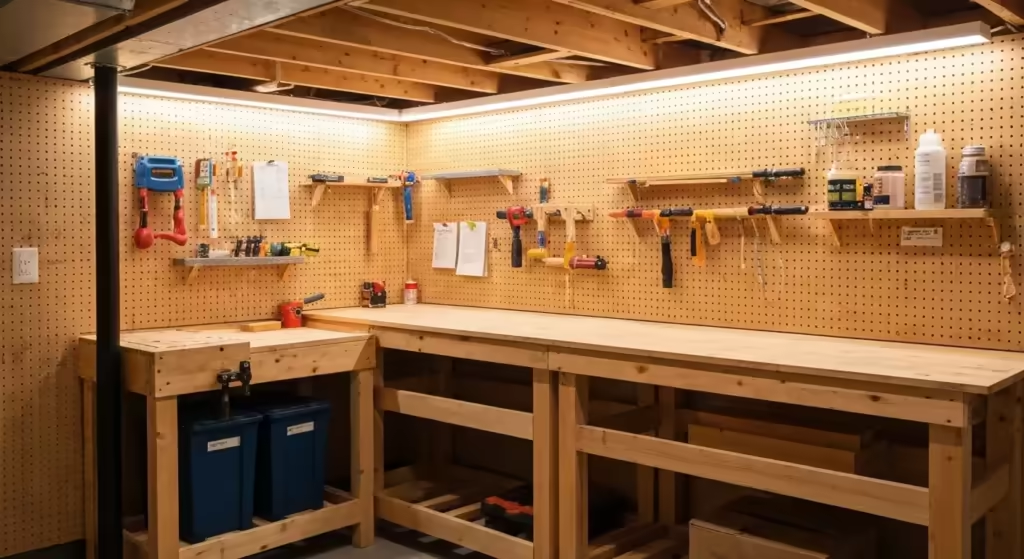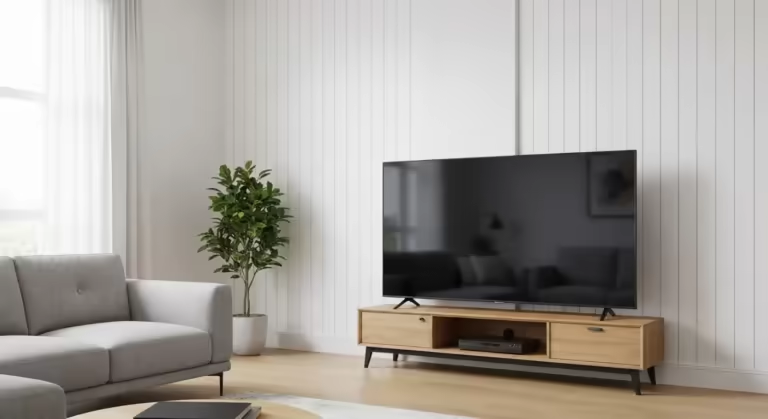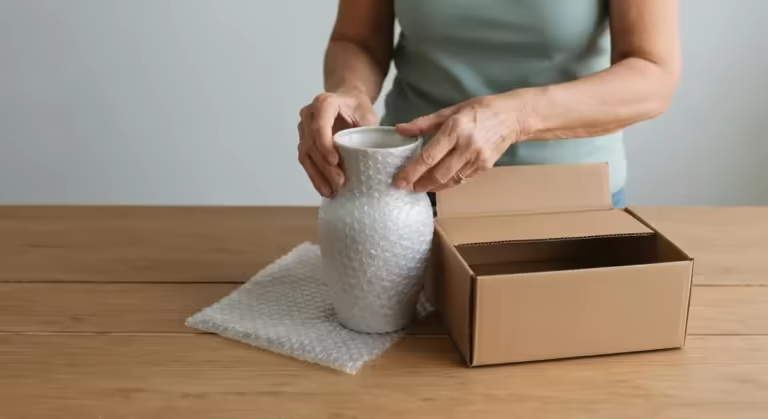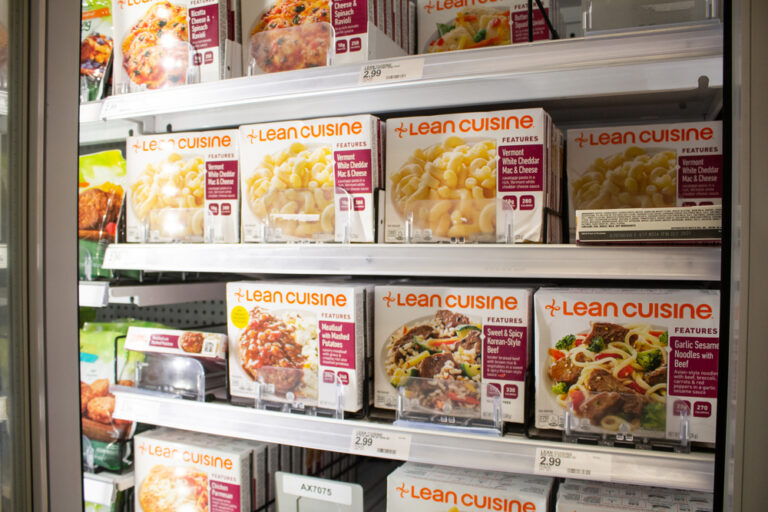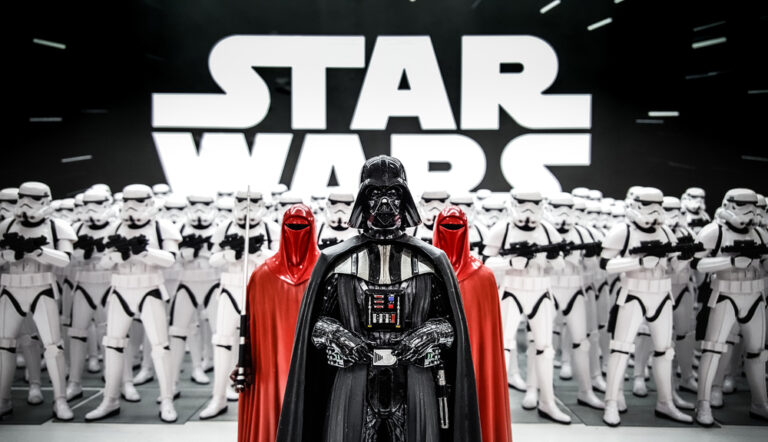It wasn’t a single, dramatic moment. There was no thunderclap or sudden, life-altering event. Instead, my financial awakening happened under the harsh fluorescent lights of a grocery store aisle, with a squeaky-wheeled cart and a heart full of a quiet, creeping dread. I was standing in front of the snack aisle, a place I knew all too well, holding a bag of gourmet potato chips I absolutely didn’t need. And I just froze.
For years, shopping had been a kind of haphazard, rudderless voyage. I’d go to the store with a vague notion—”we need food for the week”—and wander the aisles, letting colorful packaging and tempting sales dictate my purchases. My cart would fill up with a random assortment of items that seemed like a good idea at the time. A new flavor of coffee creamer, a fancy block of cheese, a pre-made meal kit that promised a quick dinner. I told myself I was being spontaneous, treating myself after a lifetime of hard work.
The reality, which I was finally forced to confront in that snack aisle, was far less romantic. My spontaneity was costing me a fortune. The treats were a temporary balm for a deeper anxiety about my finances. And my weekly grocery trips were a masterclass in inefficiency and waste.
That day, I put the chips back. I walked, almost in a daze, to the checkout with only the few items I’d genuinely come for. The receipt was mercifully small. But the drive home was heavy. I couldn’t shake the image of my refrigerator, stuffed with wilting vegetables I’d had good intentions for, or my pantry, a graveyard of half-used bags of quinoa and specialty flours. It wasn’t just about the money, though that was a huge part of it. It was about the waste. The chaos. The feeling of being completely out of control in one of the most fundamental areas of my life.
The Reckoning at the Dining Room Table
That evening, I did something I’d been avoiding for months, maybe even years. I pulled out a cardboard box filled with old receipts. Bank statements. Credit card bills. I spread them across the dining room table, the sheer volume of paper a testament to my avoidance.
My wife, ever my partner in crime and in courage, sat down with me. She didn’t say “I told you so,” though she could have. Instead, she just handed me a calculator and a notepad. For the next two hours, we went through them. We circled every grocery store purchase, every trip to the big-box store, every “just popping in for one thing” expense.
The number we arrived at was staggering. It was far more than I had ever guessed. It was a number that represented a significant chunk of our retirement income, just vanishing into a fog of unplanned purchases. Seeing it there, in black and white, was like a punch to the gut. I felt a wave of shame, followed by a surge of anger—mostly at myself. How had I let it get this bad? How had I worked my whole life to build a comfortable retirement, only to squander it on things I didn’t even remember buying?
This was my turning point. Not in the brightly lit store, but right there, at my own table, surrounded by the evidence of my carelessness. I knew I couldn’t just “try to do better.” I needed a system. A plan. A non-negotiable ritual. I needed my own “must-have” list, not just for the store, but for my life before I even stepped out the door.
My First Awful Attempts at a Shopping List
My initial forays into list-making were, to put it mildly, a disaster. I thought the solution was simple: just write down what I need. So I’d grab a sticky note and jot down things like “milk,” “bread,” “veggies,” and “dinner stuff.” I’d march into the store, list in hand, feeling proud and organized.
But my lists were too vague. “Veggies” was an open invitation to buy whatever looked good, whether I had a plan for it or not. “Dinner stuff” was even worse; it was a blank check for my imagination to run wild in the meat and pasta aisles. I’d stick to the list, technically, but I’d also add a dozen other things that weren’t on it. The end-of-aisle display of barbecue sauce was on sale? Into the cart. A new type of frozen pizza? Why not?
I’d come home and feel that same old frustration. I had a list, yes, but it wasn’t an effective shopping list. It was a suggestion, not a blueprint. It didn’t solve the core problem: I was still shopping without a real plan. I realized that the list itself wasn’t the magic bullet. The magic happened in the pre-store planning, long before I ever grabbed my keys.
The Journey to a System That Actually Works
This is where the real work began. I didn’t find this system in a book or on a blog. I built it, piece by piece, through trial and error, frustration and small victories. It became a kind of personal puzzle I was determined to solve.
Step 1: The Great Kitchen Excavation
My first real breakthrough came from a moment of pure annoyance. I was trying to put away a new jar of mayonnaise and couldn’t find a spot. I started pulling things out of the refrigerator door and discovered I already had two other jars of mayonnaise, both half-full.
That was it. I declared a household moratorium on buying anything until I knew exactly what we already had. I called it “The Great Kitchen Excavation.”
I started with the pantry. I took everything out. Everything. I was shocked. I found three boxes of the same type of crackers, four cans of chickpeas, and enough pasta to feed a small army. Some things were expired, a silent testament to money thrown directly in the trash. I felt a pang of guilt, but I pushed it aside and focused on the task.
I did the same for the fridge and the freezer. The freezer was a treasure trove of forgotten meals and mystery meats wrapped in foil. I got a marker and some labels and started identifying everything.
This process, which took a full afternoon, was transformative. It wasn’t just about organizing. It was about creating a mental and physical inventory. Now, before I even think about what I need to buy, I do a “mini-excavation.” I spend 10 minutes looking through the pantry, fridge, and freezer. This simple act alone has saved me countless dollars on duplicate purchases. It became the first, unskippable step in my pre-planning ritual.
Step 2: The Meal Plan Revelation
With a clear picture of what I owned, I faced the next hurdle. What were we going to eat? My old method was to buy ingredients that looked good and hope inspiration would strike later. It rarely did. More often, fatigue or indecision struck, and we’d end up ordering takeout while the beautiful, expensive ingredients I bought went bad.
So, I reluctantly started meal planning. At first, it felt like a chore. I sat down on Sunday with my notepad and tried to map out seven days of dinners. It felt restrictive. But then, I tried a different approach. I looked at my newly organized pantry and the sales flyer for the local grocery store.
I saw I had pasta and canned tomatoes. The store had ground beef on sale. Bingo. Spaghetti for Monday. I had chicken thighs in the freezer and found a recipe for a simple sheet-pan dinner with potatoes and carrots, which were also on sale. Great. That’s Tuesday. I realized meal planning wasn’t about being a gourmet chef. It was about connecting the dots between what I had, what was affordable, and what was realistic for a weeknight.
This was a monumental shift. I stopped letting the store tell me what to buy. Instead, my plan told me what to buy. It gave my shopping trip a purpose, a mission. I wasn’t just buying “dinner stuff”; I was buying ground beef, a yellow onion, and a head of garlic for spaghetti night. The specificity was a shield against impulse buys.
Step 3: Forging the Ultimate Weapon – My Two-List System
Now that I had an inventory and a meal plan, I could finally tackle the list itself. I learned that creating effective shopping lists required more structure than a simple scrap of paper. This led me to develop what I now call my “Two-List System.”
The Master List: First, I created a “Master List.” I used a simple word processor document, but a notebook works just as well. On this list, I wrote down every single item we buy with any regularity. But I didn’t just list them randomly. I organized them by store layout. I created headings like: Produce, Meat & Seafood, Dairy & Eggs, Bakery, Canned Goods, Frozen Foods, Household Supplies, Personal Care.
This took some time to set up, but it was a one-time effort. Now, when I prepare for a shopping trip, I’m not starting from a blank slate. I have a comprehensive checklist of my entire consumer life.
The Weekly List: This is the list I actually take to the store. On Sunday, after I’ve done my kitchen inventory and made my meal plan, I sit down with my Master List. I go through it, section by section, and check off what I need for the upcoming week. I check the milk, the eggs, the bread. I look at my meal plan and add the specific ingredients: “1 lb ground beef,” “2 yellow onions,” “shredded mozzarella.”
I then rewrite these checked items onto a smaller, physical list. I still use paper for this. There’s something powerful about the physical act of writing it down and crossing things off. My list is no longer a vague wish; it’s a precise, actionable order form based on real data from my own home.
Step 4: The Pre-Store Ritual
My “must-have” list before I hit the store isn’t just the piece of paper. It’s the entire ritual that leads up to it. It’s a mental checklist that I go through to fortify my resolve.
First, I double-check that I have the physical list in my pocket. Leaving it on the counter is a rookie mistake I made more than once in the early days, leading to disastrous, list-free shopping trips.
Second, I eat a snack. This sounds silly, but it’s probably one of the most important lessons I learned. I discovered firsthand why lists reduce spending, but I also learned that hunger is the arch-nemesis of a budget. Shopping on an empty stomach makes everything look delicious and necessary. A banana or a handful of almonds before I leave takes the edge off and keeps my brain focused on the mission, not my rumbling stomach.
Third, I grab my reusable bags. This started as an environmental choice, but I found it had a psychological benefit, too. Having a finite number of bags forces me to be more conscious of what I’m buying. I can’t just endlessly fill a giant cart; I have to stick to what will fit.
Finally, as I walk into the store, I take a deep breath and look at my list one more time. I remind myself of the goal: get what’s on the list, and only what’s on the list. I am no longer a wanderer. I am a person with a plan.
The Aftermath: A New Reality
The change was not immediate, but it was profound. The first month of my new system, my wife and I sat down again at the dining room table. This time, there was no dread. We looked at the bank statement, and the grocery spending was noticeably, undeniably lower. We had saved over $300.
I was stunned. I knew it would make a difference, but I hadn’t grasped how much. The reality of saving by pre-planning purchases was no longer an abstract concept; it was cash in our bank account. Over the course of a year, that adds up to thousands of dollars. Money that now goes into our travel fund, into gifts for our grandchildren, or simply sits there as a comforting financial buffer that has dramatically reduced my anxiety.
But the benefits went far beyond the financial. My kitchen is calmer. There’s less waste, less clutter. I no longer open the fridge to a science experiment of wilted greens. Cooking is easier because I actually have the ingredients I need for the meals I planned.
The biggest change, though, has been in me. I feel a sense of control and accomplishment that was missing before. That feeling of quiet dread in the grocery store has been replaced by a feeling of purpose. I walk the aisles with confidence, my list as my guide, immune to the siren song of the snack aisle. I finally understood, on a deep, personal level, why lists reduce spending: they eliminate decision fatigue. They create a protective barrier between your rational mind and the billions of dollars spent by marketers to trigger your impulses.
This journey wasn’t about becoming a miser or denying myself life’s pleasures. In fact, it’s been the opposite. Now, when we decide to buy that fancy cheese or a special bottle of wine, it’s a conscious choice. It’s a planned treat, not an impulse buy born of anxiety. It feels earned and is enjoyed all the more for it.
My “must-have” list is more than paper. It’s a symbol of my commitment to myself, to my family, and to the secure, peaceful retirement I worked so hard to achieve. It’s proof that sometimes, the most powerful tool for financial freedom isn’t a complex investment strategy, but a simple, well-thought-out plan, a pen, and a piece of paper.





